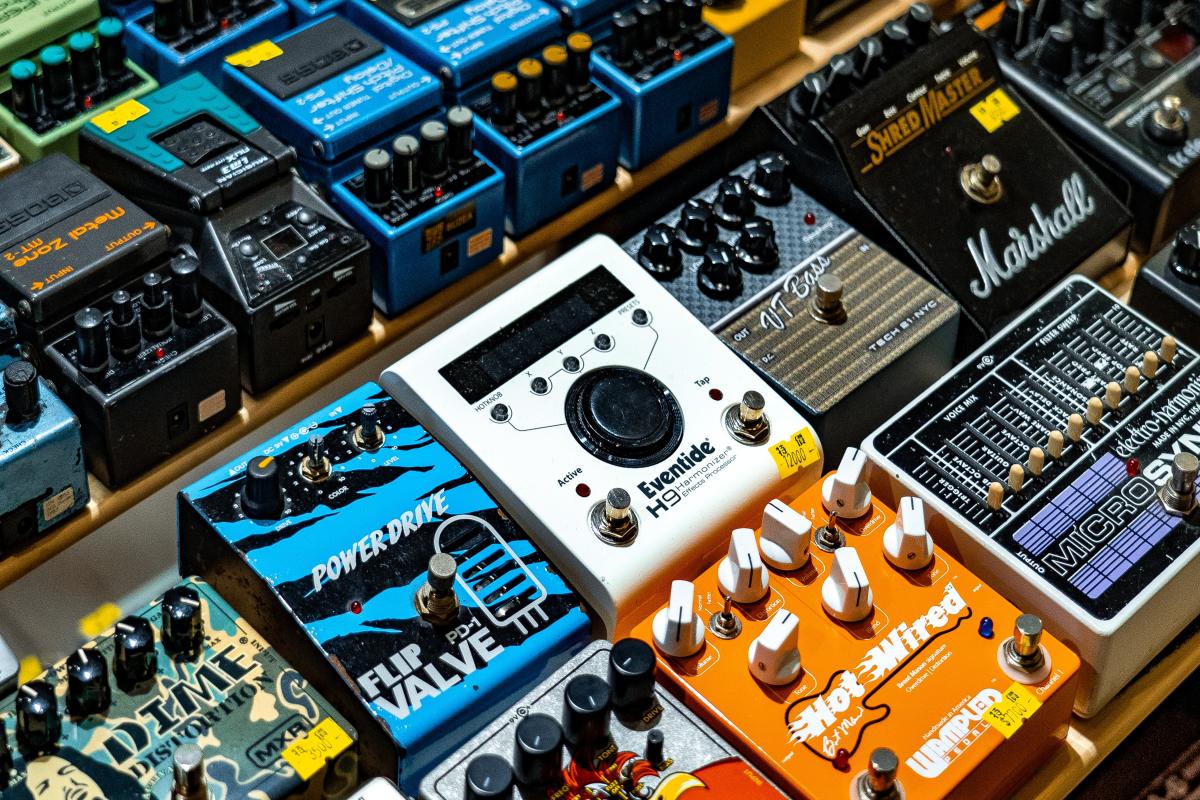
Explanation of the different basic effects
Many musicians are looking to emancipate their sound with effects. The possibilities are endless, but first it's important to understand the basic types of effects and their functions.
What is an effect?
An effect is a modification of the "clean" sound of your instrument. It's an electronic alteration of the signal to enhance the basic sound of your guitar. There is a multitude of them for different applications. Generally in the form of a small box, the effects pedals are connected in series as follows:
guitar - jack cable - effect pedal(s) - amplifier
The different pedals are racked on a "pedal board" that each guitarist builds according to his desires and artistic aims. If you listen to a song and you like the sound of the guitar, go to https://equipboard.com/ to discover the equipment that the artist used.
The different types of effects
First of all, there are the dynamic effects, which modify the grain of the guitar sound, such as compressor, limiter, overdrive, distortion, fuzz. These effects played a preponderant role in the creation of styles such as rock'n'roll, hard rock, metal... Then come the effects that alter the frequencies of the instrument, such as the equalizer, the wah-wah, the auto wah... Finally, there are the "spatial" effects, which will create relief to the sound such as delay, reverb, chorus... Since the creation of the first pedal in 1992, the possibilities of sounds are infinite because the offer has exploded in view of the competition of many brands available on the market.
Dynamics effects :
Saturations (in order)
overdrive
This is a slightly saturated sound, which aims to "warm up" the sound of the guitar. It will bring some grain, "a color". This effect is very much used in the blues for example. Historically, the first saturation was produced by piercing the amplifier's speakers, thus creating a dirtier sound. Later on, the saturation technique was perfected. In terms of pedal brands, let's mention for example the OS-2 from Boss, or the Tube screamer from Ibanez.
Distortion
The distortion can be compared to a more advanced overdrive, which will distort the clean sound of the guitar a little more. It is the typical sound of the "rock" guitar, the sound of the mythical riffs and the wild solos of the guitar heroes. Historically, distortion comes from the sound that a tube amplifier produces when it emits too much signal. Distorting the signal and boosting it to increase gain and sustain. Examples are the DS-I from Boss, the Iron Horse from Walrus Audio, or the df7 from digitech.
Fuzz
Fuzz is a type of distortion in its own right. It's a thick, fat sound that sounds like an army of angry drones. This effect can be found in various styles such as grunge or Jimi Hendrix' wild riffs. Historically, the Fuzz was conceived in the studio, when a guitar was plugged directly into a Neve console slice (mixer) with too much signal. Examples are the Big Muff by HelectroHarmonix, La mufuletta by JHS, or the Fuzz factory by Z-vex.
Compressor
Distortion also means compressor: it flattens the levels between the loudest and the softest sounds. This phenomenon occurs naturally in distortion because it is an excess of signal, which reduces the dynamics considerably. In other words, there will be less difference in volume if you hit the strings of your guitar hard and softly using compression. The sound will remain more or less linear.
Apolline offers singing lessons in Lausanne as well as guitar lessons, drum lessons and piano lessons to help you perfect your musical skills.
Did you like this article? Here are some others that might interest you:
